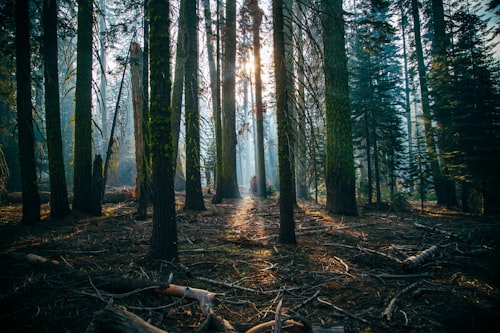In a forest investment, an investor participates financially in the investment object "forest". The income comes mainly from the harvesting and subsequent sale of the wood.
Forest investments can be natural forests as well as plantations or wood processing companies. At this point, I consider forest investments in a narrower sense. Investments in the wood processing industry or in energy wood plantations are excluded.
Please also keep in mind that most of the legal obligations mentioned here, as well as the deeper consideration of timber species, represent more of a German/European perspective and may differ greatly in other countries.
Let's imagine the typical average stand of a private forest owner: One hectare of spruce forest ("Fichtenwald"), planted 40 years ago and left to its own devices since then. The trees are far too dense, thin, very long and, without being able to lean on their neighbors, would barely survive a mild summer wind without falling over. Even such plots can yield annual profits of several hundred euros per hectare within a few years. Well-managed forests can easily yield a return of over 6%, with the type of management being more important than the quality of the soil or the location of the land.
Direct investment in forestry
The timber or wood asset class can be invested in two ways. The "classic" way is direct investment in forest land. This type of investment is generally considered to have a very stable value (in part because there are no daily prices, although there are risks from pest or fungal infestations, for example, that can lead to a total loss), but the minimum investment amounts are usually quite high and the investments are not easily liquidated.
In a direct investment, investors have a direct interest in the forest land or trees as buyers or lessees. The forest is managed by a forest service provider. They are paid from the proceeds of the sale of the trees. The investor is entitled to the profit after deducting other costs. Thus, direct investment usually consists of two contracts: a contract to buy or lease the land or trees and a contract with the forest service provider.
The logical steps in direct investment include:
Cadastral forest parcel
- Cadastral office ("Katasteramt")
- Different planting; when was it planted?
- Boundary notification via surveyor
- Record forest plot
- What was planted? Fully covered with trees or are there major gaps in the stand (e.g. diameter greater than 15m).
- Age determination (spruce ("Buchen"), douglas-fir ("Douglasien"), etc.)
- Soil quality
- Use scenarios of the forest parcel.
- Fuelwood supplier
- Sustainability e.g. be optimally prepared for climate change?
- Provide a home for as many species as possible?
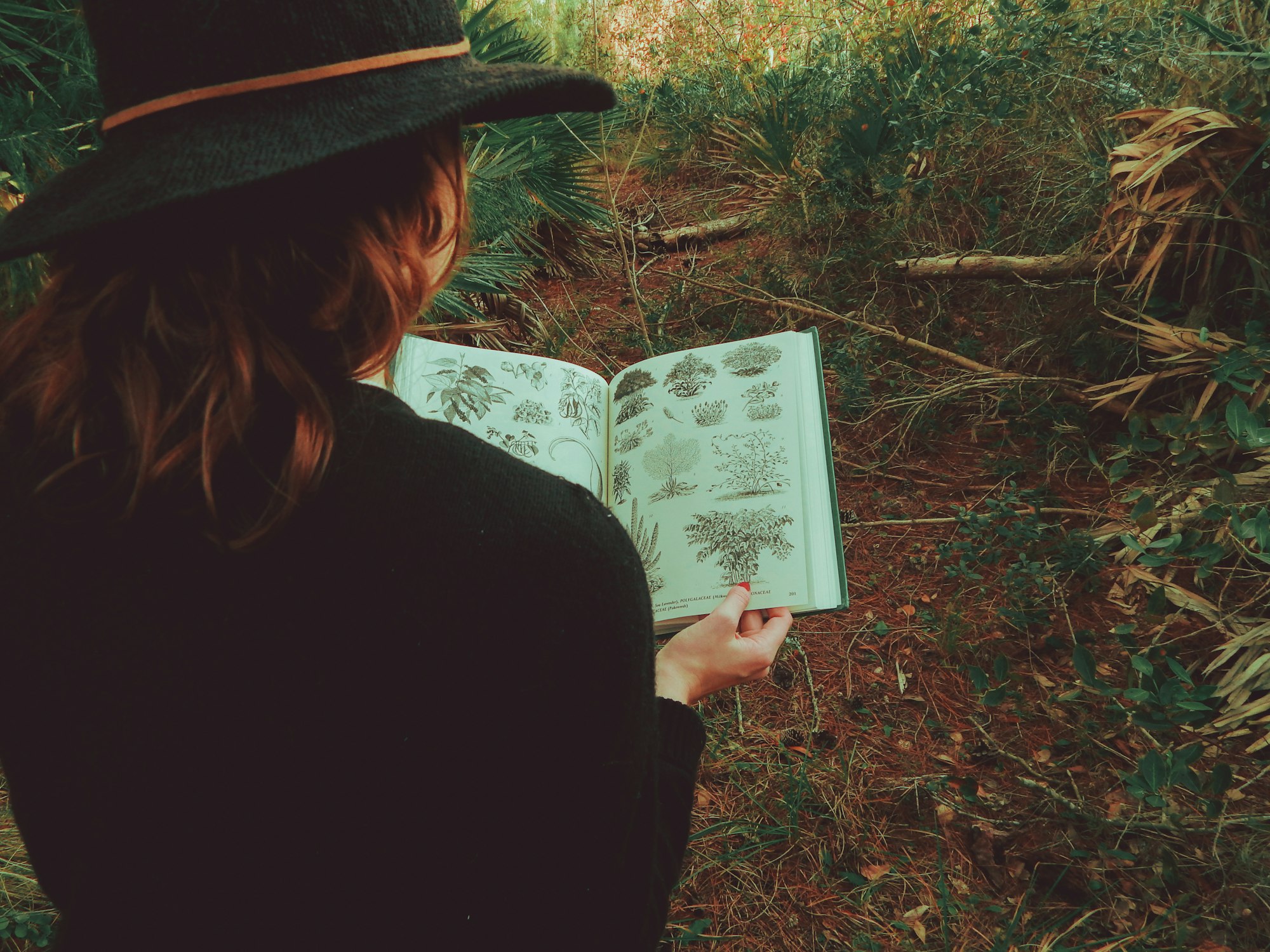
Soil and tree species knowledge
In order to determine a good correlation for your direct investment, it is crucial that you understand and deepen your knowledge of your tangible assets. Soil and tree species science is therefore something you should hone your skills in.
In general, some criteria for better growth of all trees are: Availability of minerals and bases (acidification of the soil), water supply and aeration, i.e. pore volume.
So-called fast starters are:
- Light tree species such as birch ("Birke"), cherry ("Kirsche"), poplar ("Pappel) or rowan ("Vogelbeere") are fast starters.
- In the first 30 years, they outgrow the other tree species, only to rapidly decline again in the following decades - as if they had spent themselves. As a rule, they are comparatively short-lived and make way for new shade tree species after only 100 years.
Spruces ("Fichten")
- + fast growth
- - hardly loses needles and therefore offers a large attack surface during storms
- - threat from bark beetles ("Borkenkäfer") (when close to dying of thirst in summer).
- - susceptible to red rot ("Rotfäule")
- - spruce needles are acidic; the humus under spruce trees has a correspondingly low pH value
- - vibrations of the trunk in the wind are transmitted to the root plate
- + can become very old
- is used for paper and furniture production and as construction timber
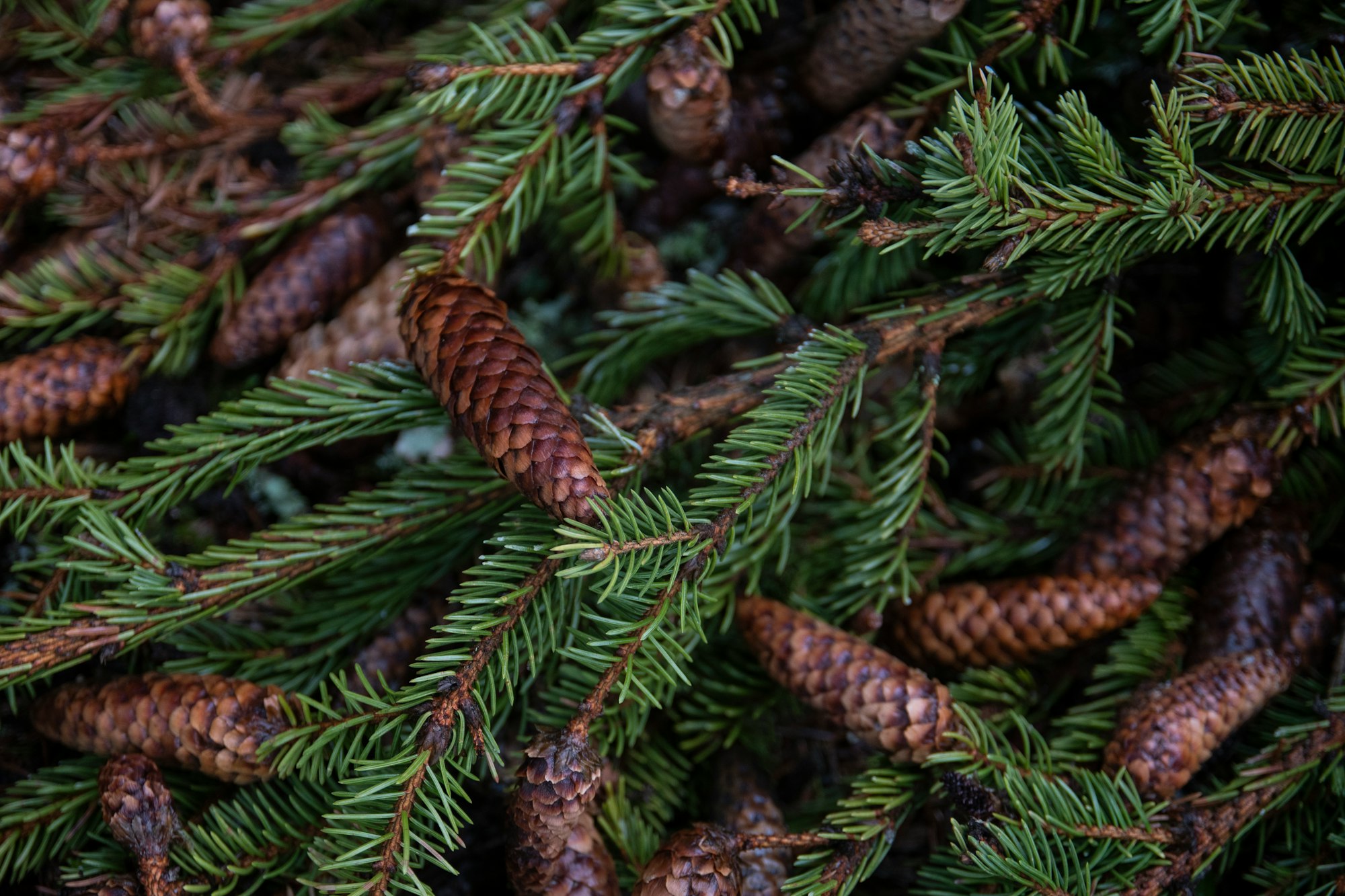
Douglas fir ("Douglasie")
- + old age, high tree height
- + tolerates dry sites
- - not really suitable for lime as a foundation stone
- + natural protection against decay
- + relatively insensitive to insects and fungi
+ relatively storm resistant - - Depending on the Douglas fir species, sparse needles and resinous stems may occur. Unfortunately, mixed seed has been introduced over the last hundred years, so most Douglas-fir stands have a variegated genetic mix of the two origins.
- - After planting, young Douglas-firs are particularly sensitive to drought. Even more than with other tree species, drying out of the roots must be prevented; the months after planting are risky due to low rainfall and often mean a high dieback rate.

Pine ("Kiefer")
- with 24% the second most common tree species in Germany's forests
- 40 m final height, age over 500 years
- pine wood is used for chipboard, paper and beams for house construction
- + stronger than spruce
- + undemanding to climate and soil
- + can also be planted in sandy, dry and cold areas
- - is regularly attacked by caterpillar infestations, which eat away the needles
- - use of pesticides necessary
- - one-third less wood per year per hectare than boxwood and only half as much as spruce
- - permanently low sales prices

Larch ("Lärche")
- 40m final height, age over 500 years
- needle-fallen tree
- + wind-exposed area without needles drops significantly
- + root system can penetrate deep into stony soils (further stability)
- +/- as a light tree species, the larch starts quickly with large height shoots, but decreases significantly after only a few decades

Silver fir ("Weißtanne")
- 50 m final height, maximum age of 500 years.
- + is attributed deciduous tree characteristics, as its needle litter is the basic material for a very good humus
- + shade tree species; tolerates very little light when young
- + waits up to 150 years without significant growth until an old tree dies, makes way, and is stimulated to grow by the greater incidence of light
- - does not like heat and other climatic extremes
- + gets along with little water
- - is more resistant to bark beetles
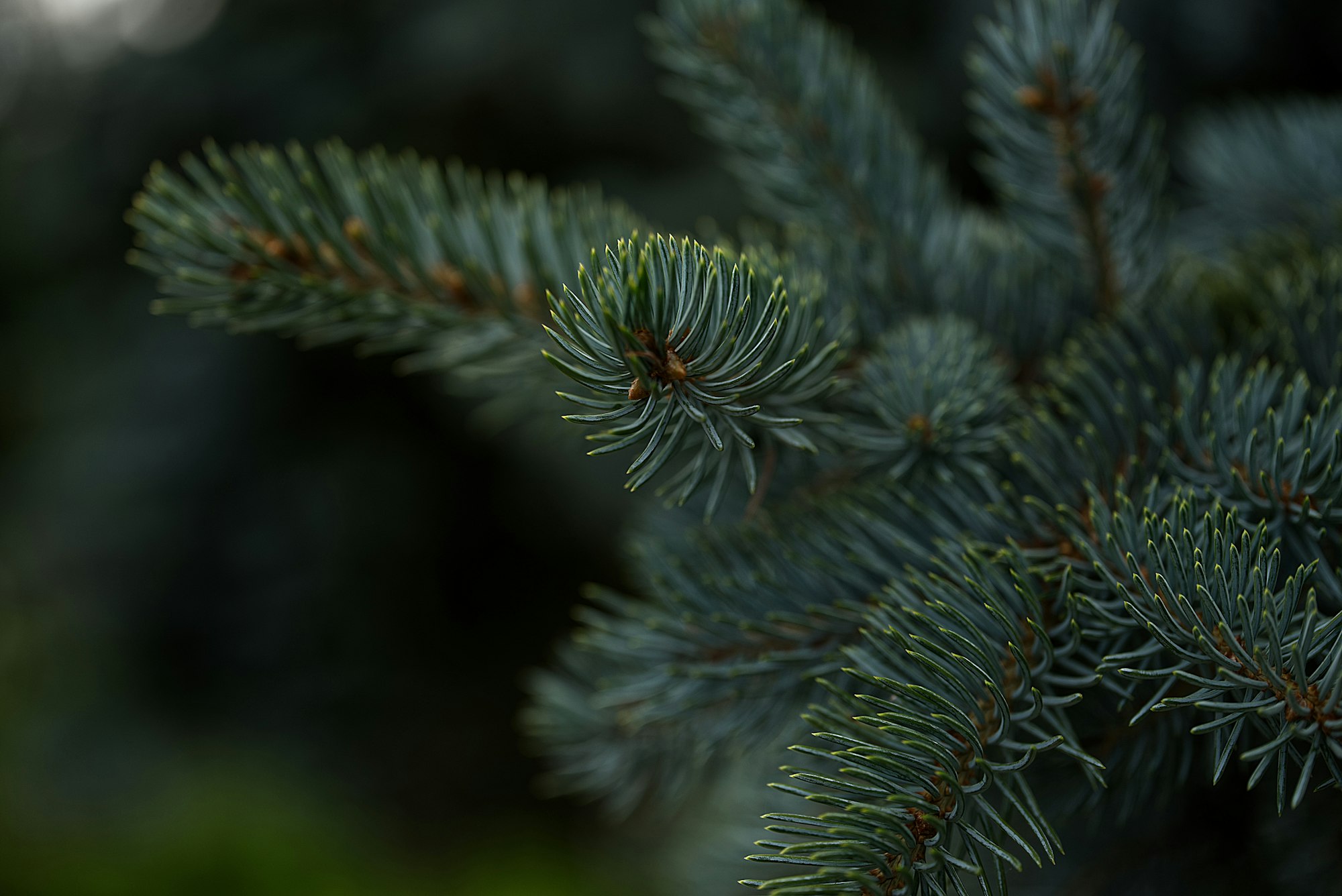
Birch ("Birke")
- maximum 120 years
- slanting or downy birch
- seeds are spread by the wind
- + can serve as nurse trees, so to speak, by providing shelter from sun and wind for sensitive shade trees such as beech
- + a team of two tree species (beech and birch) are economically interesting
- - do not provide significant timber yields until 60 years of age, but a pre-grown birch, if fasted in its youth, can provide the most valuable veneer lumber already
- + climatically very flexible (northern Sweden to southern Italy).
- use of high quality logs for furniture making or paper; interesting also for fireplace owners (because of its appearance)
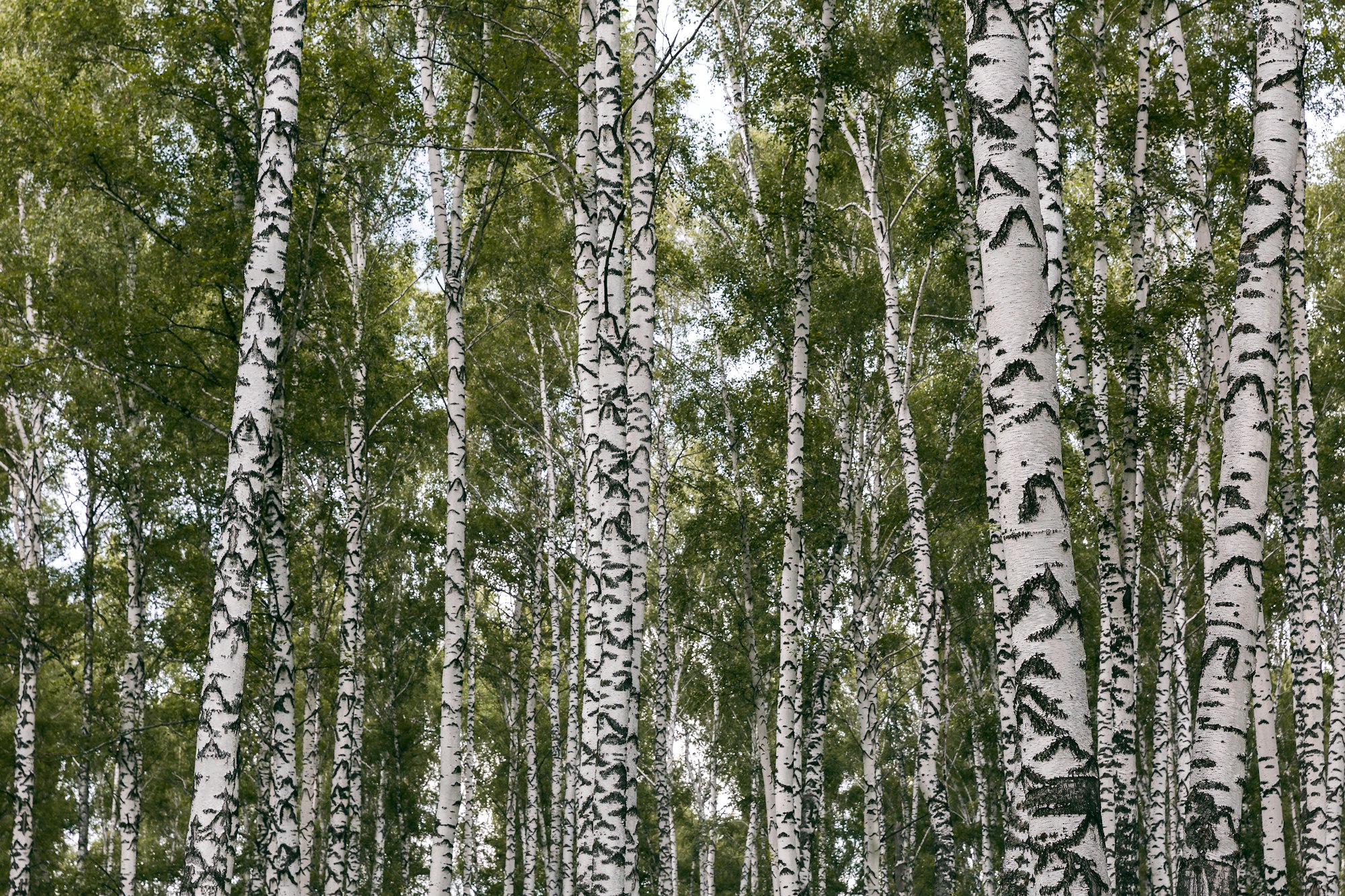
Beech tree ("Birke")
- 50m height, 400 years
- + exceptional shade tolerance.
- - gradually pushes into the crowns of other species and causes them to die off
- - young beeches need the shade of old trees for healthy growth over many decades
- + slowed growth in the twilight ensures perfectly straight trunks and the best wood qualities
- - the timber yield of a beech forest, measured in solid cubic meters, is about 25% less than that of a spruce forest of the same size
- + beech wood has a 25% higher calorific value, the yield in the form of energy wood, measured in kilowatt hours, is identical to that of a spruce forest
- + grows in principle on all soils; the humus stores a lot of water and nutrients
- - on wet sites beech forms only shallow roots
- used e.g. for valuable furniture and flooring; most popular type of firewood

Oak ("Eiche")
- up to 40m, rarely older than 500 years
- species: sessile oak, pedunculate oak
- + preferred on dry south-facing slopes or moist sites
- + typical light tree species; grows very fast in the first decades, then changes to a slower pace
- - slow growth at old age causes an equally strong decline in wood production, so that oak forests can supply about one third less raw material than beech forests

Ash ("Esche")
- +/- as a semi-shade tree species, the shoot grows under old trees, but can only compete with beech if it has a corresponding growth advantage
- ash trees like calcareous or loamy, well-aerated soils
- + ash's shed leaves are attractive to soil organisms and produce best humus
- - increased fungal infestation, only ash trees from robust mother trees should be planted
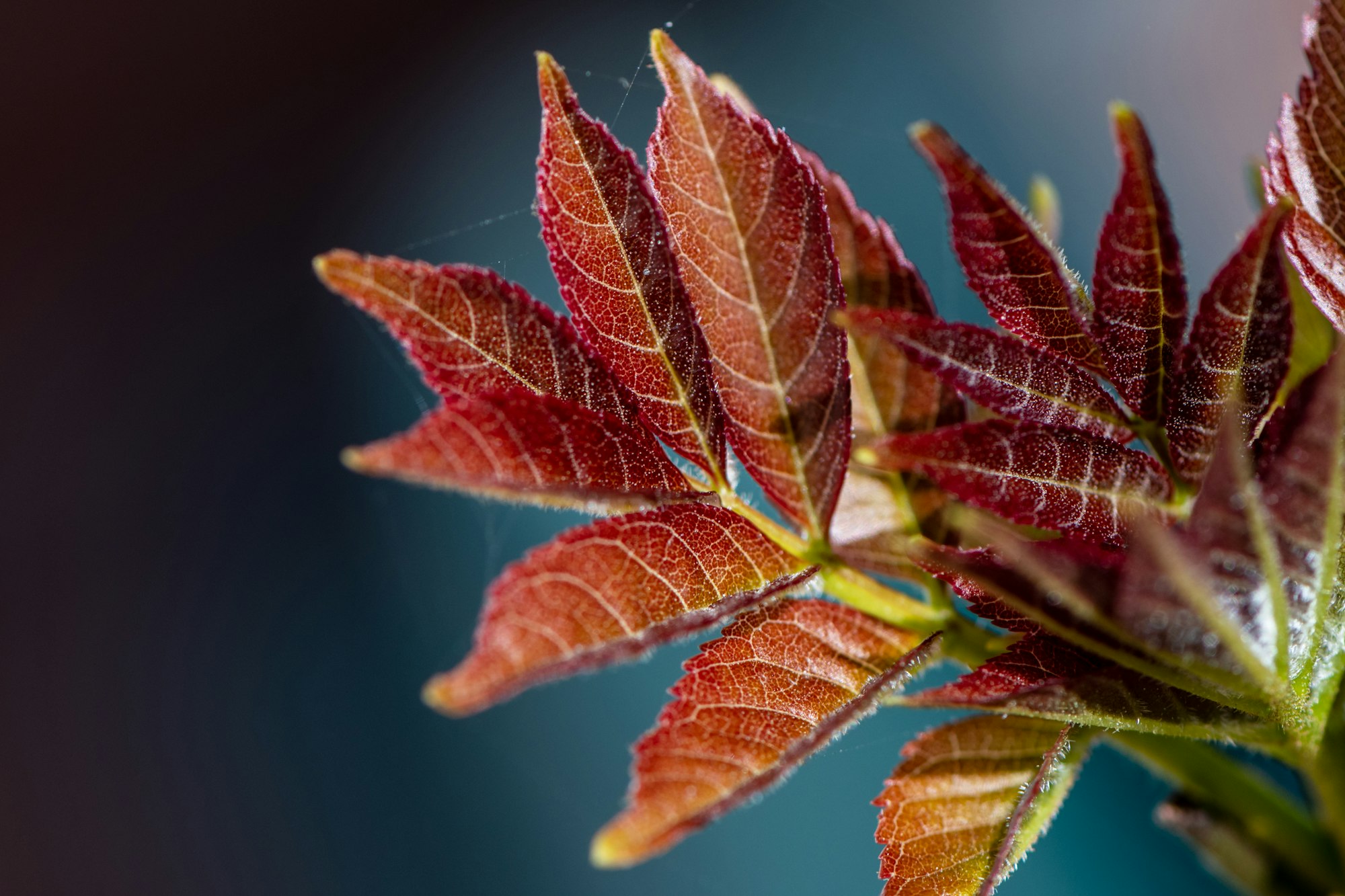
Maple/Sycamore ("Ahorn")
- final height 40m, maximum 500 years
- + the sycamore has exceptional frost tolerance and does well at higher elevations
- + prefers nutrient-rich, well-aerated soils, also very moist
- - in combination with beech, the maple, which grows fast in its youth, will die sooner or later if not helped

Bird cherry ("Vogelkirsche").
- - begins to rot from the age of 80
- - wet and acid soils and areas with frequent late frosts are not suitable for the heat-loving species
- + valuable veneer wood can be harvested after 60 years of age, which regularly fetches top prices if the quality is good enough
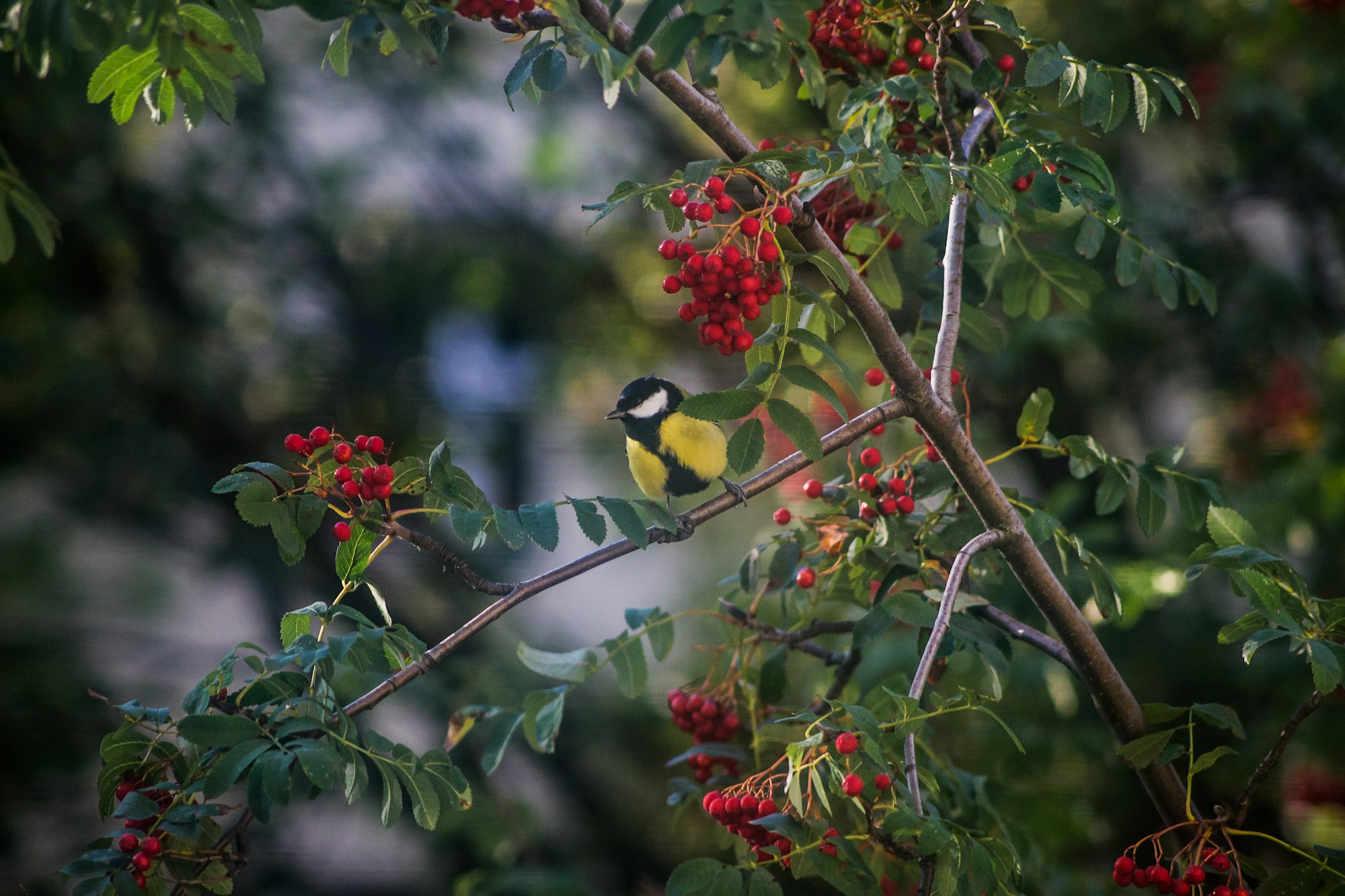
Rowan berry ("Vogelkirsche")
- Height max. 25 meters, maximum age 100 years.
- + about 200 species depend on it
- + fast growth
- + no special demands on soil and climate
- + already 60 years old, it, as well as the related service tree, can fetch more than 10,000 € per solid cubic meter with appropriate qualities and is thus considered to be one of the most profitable tree species of all

Risk & -reduction
Risk
- Any deviation, for example from the cheapest tree species, is paid for dearly by the forest owner in the form of time and money. For example, growing spruce in warm regions is prone to disasters and forces constant replanting due to storm damage and bark beetle feeding.
- A forest owner with a colorful bouquet of species can always offer what is making a lot of money at the moment. However, not all trees go together. If light and shade tree species are planted at the same time in the same area, the end of the light tree species will be in sight after four decades at the latest.
- Trees are not felled until their timber is contractually secured, i.e., when the buyer and price have been determined. This is because the logs are a perishable commodity: in the summer, a few weeks are enough to produce shopworn trees due to insect or fungal infestation.
Risk reduction
- Mixed forests are like financial investments: a broad diversification reduces the risk. For example, if your forest contains beech and spruce, a total loss of spruce due to bark beetle damage or storms does not mean the end of the forest or the end of its potential uses.

Rights
Trespassing rights
- Every forest may be entered, in particular for recreational purposes. However, every visitor must behave in such a way that the forest is impaired as little as possible and its management is not hindered.
- Depending on the federal state, this right of access may be restricted to certain paths or certain times of day. Entering closed forest areas is also usually prohibited. A permit from the forestry authority is usually required to close off forest areas. Therefore, it is also not allowed to deny access to the forest to other persons without a valid reason.
- This right of entry also includes the collection of small quantities of berries, herbs and mushrooms for personal use outside of nature reserves. However, anyone who collects natural products in larger quantities in the forest without the express permission of the lower nature conservation authority, for example for commercial purposes, risks a fine.
Duty of care
- Under the duty of care, the person responsible for a hazard must take all necessary and reasonable measures to prevent harm to others as much as possible. A forest can be a source of danger, and you as the owner may in some cases be held responsible for the damage caused.
Cost of services
Property tax
- The property tax for your forest is calculated by multiplying the assessment basis by the assessment rate of the respective municipality. The assessment base, in turn, is calculated by multiplying the assessed value by the property tax rate. A distinction is also made between property tax A for land used for agriculture and forestry and property tax B for building land.
- The assessed value depends on the type of use and is determined in a special assessment procedure. However, the last main assessment took place in 1964. In the new federal states, the so-called substitute economic value is used, since the last main assessment took place in 1935. The substitute economic value for forest land in the new federal states is €63.91 per hectare, while the standard value varies in the old federal states.
- The property tax rate also depends on the use of the land, as well as the type of development and whether the land is located in the new or old federal states. A uniform rate of 0.6% applies to forestry operations.
- The assessment rate is an instrument with which the municipalities can influence the amount of municipal taxes to be paid. In the case of property tax A, i.e. the property tax for land used for agriculture and forestry, the assessment rate in most municipalities is between 200% and 400%.
An example:.
Let's assume you are the owner of one hectare of forest in the new federal states, in a municipality with an assessment rate for property tax A of 400%. If you multiply the economic replacement value of €63.91 by the property tax rate of 0.6%, the result is an assessment base of €0.3835. Multiplying this value in turn by the assessment rate of 400% results in a property tax of €1.53.
Employer's Liability Insurance Contributions ("Berufsgesnossenschaftsbeiträge")
- Every forest owner is automatically a member of the Social Insurance for Agriculture, Forestry and Horticulture (Sozialversicherung für Landwirtschaft, Forsten und Gartenbau/SVLFG). The regular costs incurred here are the occupational accident insurance. It is mandatory for all forestry operations to prevent forestry work from being carried out uninsured. After all, serious accidents can occur during forestry work. Owners of land under 0.25 hectares can apply to be exempt from this contribution.
- Contributions are calculated according to the "principle of retroactive coverage of needs". This means that the expenses of each year are included in the contribution calculation of the following year. The contribution is made up of a basic amount and a risk-based contribution. Both depend on the size of the area. While the basic contribution is between 60 and 350 euros, the risk-oriented contribution for forestry operations in recent years has been around 20 euros per hectare per year. The resulting amount is then subsidized with federal funds.
- The contributions are calculated according to the "principle of retroactive coverage of needs." This means that the expenses of one year are included in the contribution calculation of the following year. The contribution is made up of a basic amount and a risk-based contribution. Both depend on the size of the area. While the basic contribution is between €60 and €350, the risk-oriented contribution for forestry operations has been around €20 per hectare per year in recent years. The resulting amount is then subsidized with federal funds.
- For an owner of one hectare of forest, the annual contribution would be between €60 and €70, and for ten hectares it would be about €210. In terms of hectares, this contribution is significantly higher for smaller forest areas, as the minimum basic contribution of around €60 to €70 has only been reached in recent years for areas over 100 hectares, and all smaller areas are raised to the minimum basic contribution.
- Roughly summarized: For small areas of one hectare, the annual contribution is around €60; for areas up to 20 hectares, it drops to around €20 per hectare per year. Due to the aforementioned principle of subsequent coverage of requirements, the initial amounts can fluctuate from year to year, and the federal subsidies are also not fixed. For this reason, the examples given here should only be taken as a rough guide.
Contributions for water and soil associations
- The tasks of water and soil associations ("Wasser- und Bodenverbände") include, above all, the maintenance of non-navigable water bodies, dikes, pumping stations and other water management facilities. The members of these associations are usually the beneficiaries of watercourse maintenance, i.e. in particular farmers and owners of building land. In some federal states, however, municipalities are also members of water and soil associations, which in turn pass on the demands for contributions to their landowners. This leads to costs for forest owners, although the forest actually serves to regulate the water balance and, for example, drainage measures and lowering of groundwater levels are more detrimental than beneficial to the performance of the forest.
- Contributions vary widely depending on the type of water bodies present in the area of influence of each association and whether dikes or pumping stations are required in that area of influence. Along large rivers such as the Elbe, the Oder, or the Danube, where complex polder systems are operated, water and soil associations are obviously much more important. In other wetlands and former peatlands, drainage via ditches and pumping stations can also drive up water management costs. The contributions of water and soil associations can also be divided into a minimum or basic contribution and an area-based contribution.
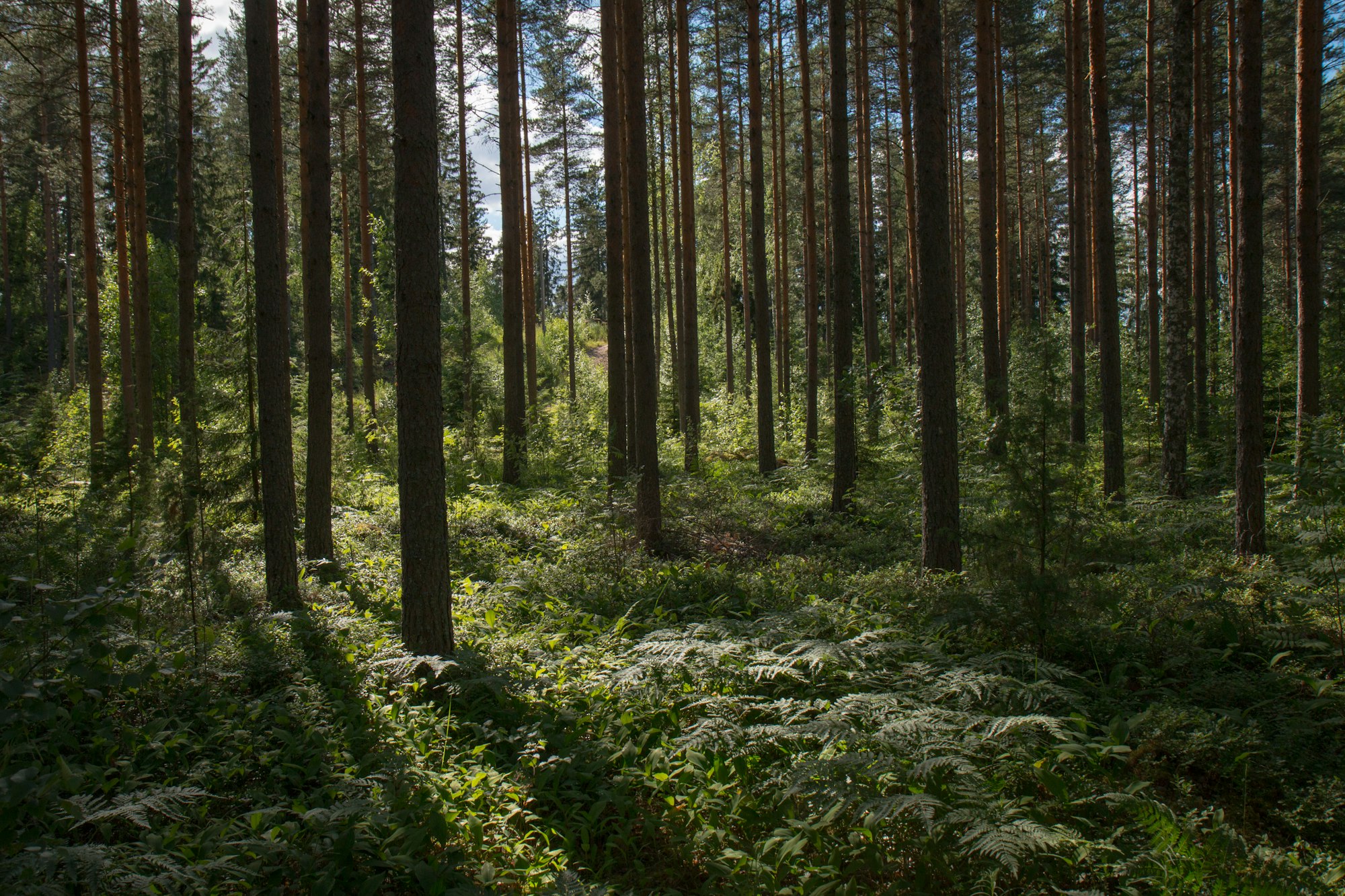
Forest prices
- Beware of blanket statements like "spruce forest ("Fichtenwald") costs approx. 1.00 €/m²". The regional differences are enormous for instance in Germany. Forests near urban centers are usually more expensive than "in the middle of nowhere". Southern Germany has great forests, but generally abstrusively high forest prices. When a piece of forest is actually for sale in Bavaria, 6.00- 8.00 €/m² is no longer a rarity. Such prices cannot be justified by the value of the wood, because for spruce wood, for example, a forest owner in Bavaria does not get more than in Rhineland-Palatinate. In the new federal states, the Treuhand has burdened forest prices for decades with land that was once sold off at knock-down prices. Here you can still get veritable forest at "bargain prices". Windthrow-prone areas with wrong alignment cost less than wind-protected areas with perfect alignment. etc.
- Basically, one should pay attention to the wood supply of a forest area. Then you can never be too far off the mark. For example, if you put the land value at 0.30 €/m², although 0.25 €/m² would have been the correct value, you have put 20% too much, but if you consider one hectare (10,000 m²), that is only 500 €. But if you estimate the wood supply and assume that, for example, a spruce forest has 300 fm/ha of wood, although it is only 250 fm/ha, you have again missed 20%, but the value of the difference of 50 fm of spruce logs is currently 2,500-3,000 €, minus all harvesting losses and harvesting and return costs! Sometimes a few individual trees make all the difference. Oak is currently in high demand. If there are 10 thick oaks (> 60 cm diameter at breast height) on one hectare that have a nice straight trunk, each of these trees can be worth €1,000. It is best to get advice from an experienced forester/woodsman.
Notary appointment
- Address and date of birth of the seller (if there are several sellers, all addresses and dates of birth accordingly)
- Address and date of birth of the buyer
- Tax identification number (can be submitted later)
- Name of the boundary of the property
- Corridor number of the property
- Plot number
- Size in square meters
- Purchase price (total and price per square metre)
- are there any tenancies or leases yes/no?
- Purchase price payment: Is the purchase price paid in cash on the spot (possible & cheap but risky) or is the money carried out after the so-called due date notification of the notary (from the notary fees a little more expensive, because the notary "supervises" the payment process)?

Offers and investment forms
The market for forestry investments in Germany is a niche segment of the gray capital market and is not subject to state financial supervision or similar regulations. In 2012, timber and forestry investments in Germany reached a total volume of 19.8 million euros.
The total market volume of forest investments worldwide is estimated to be between $300 billion and $467 billion, with investments increasing in countries that have not previously been in focus.
Forest investments have a long investment horizon due to the biological growth of trees. Even in the tropics, where trees grow faster than in the Northern Hemisphere, it takes about 20 years for a seedling to become a tree and be harvested. The security of the investment is therefore a high priority and politically stable countries are preferred for investment projects. The average term is 15 years, with a maximum of 25 years, as in the WoodStockInvest product from ForestFinance. Other examples of closed-end funds are the Pictet - Timber - I EUR. The Pictet-Timber Impact Report (2019) is also interesting in this context.
In some countries, the acquisition of property rights is also complicated, but essential for the long-term (and legal) security of the investment.
The German market offers investments in the USA (e.g. in the form of the closed Jamestown Timber 2 Fund), Brazil and Romania as well as forest areas in politically stable countries in South and Central America. Asia plays a smaller role, and Africa is still largely left out. Eastern European countries are popular because of the still low land prices, as are the forest-rich Nordic countries. Within Germany, there are not many investment areas; compared to other regions, high costs are incurred here for the acquisition of land and for its management.
Another important criterion for closed-end funds is whether the areas to be managed are fixed from the outset or whether it is a "blind pool" in which they are only determined afterwards. In order to be able to assess the opportunities and risks of an investment, it is of course advantageous if these are defined from the outset. A specific disadvantage of funds in general is the level of associated ancillary costs incurred by the investor from the outset. There are costs for developing, distributing and managing the fund. In addition, brokerage costs for suitable properties (e.g., forest land) may be incurred. In individual cases, the total share of incidental costs for funds can exceed 20 percent. This means that of 10,000 euros of invested capital, only 8,000 euros actually flow into forest acquisition and management, and 2,000 euros are spent in advance on incidental costs.
Timber sales
For forestry investments, the relevant question is how timber prices will develop in the future develop. Despite the increase in the world's population, the worldwide consumption of industrial wood has remained constant: in 1987, it was about 1.65 billion cubic meters, and in 2012, it was 1.66 billion cubic meters. Thus, industrial wood consumption does not appear to correlate with trends in world population or the world economy. This may be due, for example, to the substitution of wood by other raw materials, increased recycling, or changes in consumer behavior. In any case, it can be said that it is generally difficult to predict the development of wood prices. If the price of a particular wood rises above a level tolerated by the market, customers will switch to substitute wood or other materials. Teak from plantations is mainly sold to Asia, especially India, and only a small proportion is consumed in the producing countries themselves. For teak, prices vary widely depending on the dimension and quality of the wood, depending on whether it is, for example, five-year-old pole wood from a plantation thinning in Panama or 200-year-old teak from Burmese natural forests. Natural forest teak is considered one of the most valuable woods in the world, and prices for high-quality natural forest teak can easily be fifty times what is paid for young plantation teak.
Timber defects and price quotation
There are numerous factors that can influence the value of lumber. Some indicators that could have an impact are:
- Knots in wood
- Bend – log that is absolutely straight, at least in the typical lengths of use between 3.60 m and 5.1 m.
- Twist – Some trees have a twisted grain – in extreme cases the trunk resembles a wrung out towel. Boards made from such wood also twist during drying, rendering them unusable.
- Tension cracks – line on the bark along the log for several meters, accompanied by resin leakage. Below this is a crack that extends to the core and through which decay fungi penetrate.
Discoloration – Discoloration usually occurs in old trees due to oxygen ingress inside the trunk, resulting in brown or reddish color changes. - Insect infestation – Insects, through their feeding activity, cause holes that become visible in sawmill products. Therefore, they inevitably lead to devaluation and reduction of the purchase price.
Fungal infestation – There are different types of fungal infestation, those that only break down the sugar and thus do not destroy the wood, and those that decompose the wood itself.
Worth mentioning platforms for acquisition etc.
(Sorry, this time more with a German focus).
Final Thoughts
More and more people want to invest their money according to ethical and ecological criteria and can choose from a variety of products. When it comes to evaluating a forest investment from an economic point of view. Forest investments are fraught with great uncertainties and high risks. For people who want to invest their money safely and sustainably, it is therefore essential to inform themselves very carefully in this area.
The website and the information contained therein are not intended to be a source of advice or credit analysis with respect to the material presented, and the information and/or documents contained on this website do not constitute investment advice.

